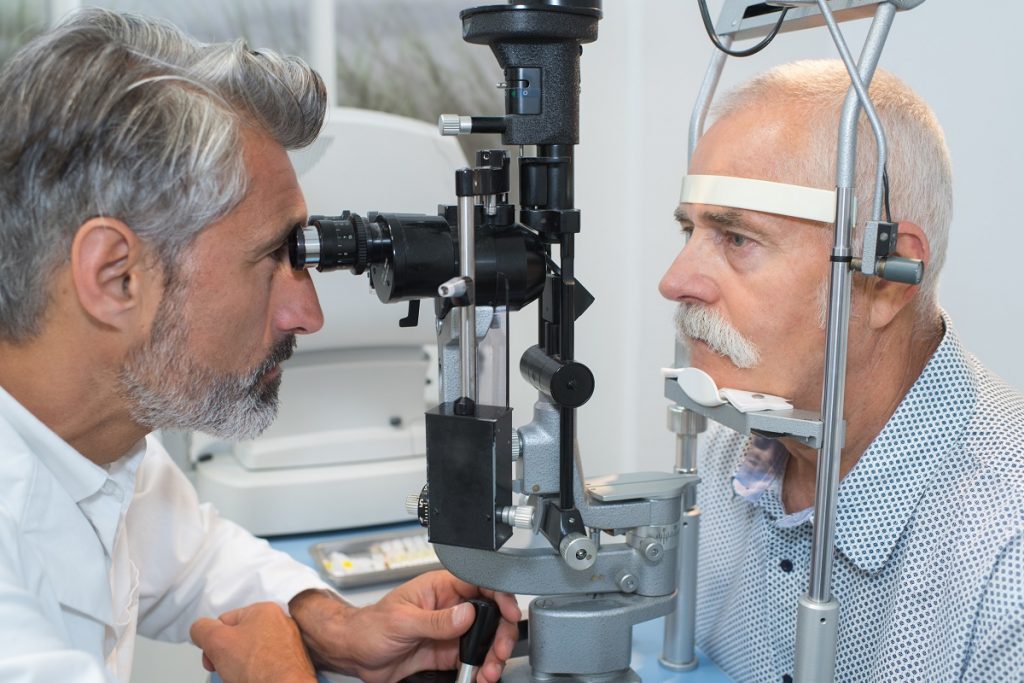The aging process leaves its mark on nearly every part of your body — including your heart, brain, bones and skin — and your eyes are no exception. While you can’t stop the hands of time from marching on, you can empower yourself by learning what to expect as your eyes age. You can also take special precautions, such as seeing an eye doctor annually or biannually for eye exams to catch any signs of eye problems, which are more easily managed when caught early.
Read on as Dr. Ernest Kornmehl reveals common age-related eye problems to watch out for.
Presbyopia
One of the first age-related eye problems you may encounter is presbyopia, or the loss of ability to see nearby objects or read fine print. A young, healthy lens is flexible and able to bend and contract to focus on objects at different distances. Around the age of 40, the lens starts to thicken and lose its elasticity, impairing near vision.
In most cases, presbyopia can be corrected with the use of reading glasses and contact lenses.
Age-related Macular Degeneration
Age-related macular degeneration (AMD) is the breakdown of cells in the macula, the portion of the retina responsible for sharp central vision. Blurry or distorted vision from AMD makes it difficult to read, sew and perform other detail-oriented tasks.
Treatment for AMD depends on the type and severity of the disease. Studies have shown that nutritional supplements can help delay the progression of early AMD; more advanced cases of AMD may require intravitreal injections or laser therapy.
Cataracts
Cataracts are cloudy areas that develop in the naturally clear lens. This clouding prevents light from easily passing through the lens to the retina. Cataracts cause blurry vision, double vision, glare, sensitivity to light and distorted color vision.
The only way to treat cataracts is to remove the eye’s lens and replace it with an artificial lens implant.
Glaucoma
Glaucoma is a group of diseases, most of which are linked to increased pressure inside the eye caused by fluid buildup. When pressure spikes, it damages the optic nerve, which transmits information from the eye to the brain. Glaucoma is often asymptomatic in its early stages. As it worsens, it gradually steals peripheral vision.
There are several ways to manage glaucoma. Usually treatment involves the use of medicated eyedrops to reduce the amount of fluid produced by the eye or to improve the way fluid exits the eye. Laser or traditional surgery can also be helpful in some cases of glaucoma.
For more information about keeping your eyes healthy as you age, please contact Dr. Kornmehl today.
